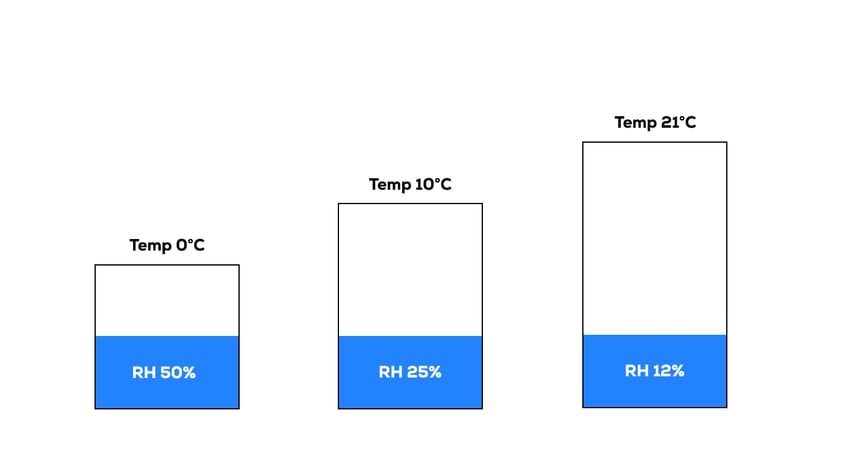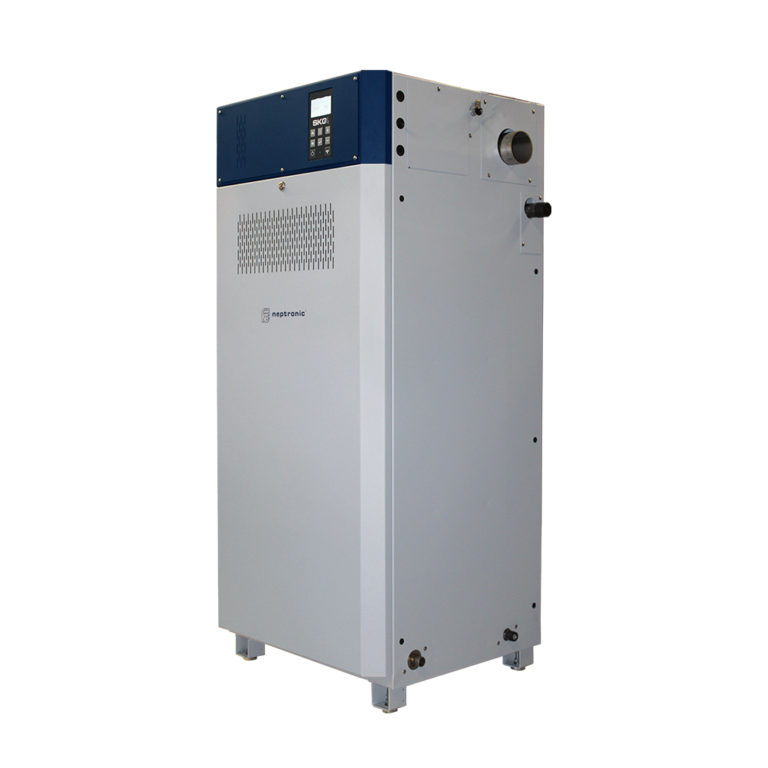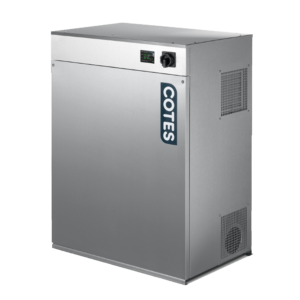Humidity levels drop in the winter because cold air holds less moisture than warm air. Many large buildings, warehouses and factories use air handling units to ventilate and heat large areas. These units take the cold dry air from outside and convert it to warm air inside. The problem gets worse when the dry air heats as it loses even more moisture, resulting in lower relative humidity.
The Science
Relative humidity is the amount of water vapour actually in the air, expressed as a percentage of the maximum amount of water vapour the air can hold at the same temperature.
At any given moment an air molecule will hold a certain amount of moisture – more on rainy days than hot sunny days. In winter, cold outside air (whether ‘wet’ or ‘dry’) is brought inside and heated. As air heats it expands, but the actual moisture content of each molecule cannot change, and therefore the relative humidity falls.
It is widely acknowledged that maintaining relative humidity levels between 40-60% significantly improves human well-being and mechanical performance. Read more to find out how low humidity effects both human and mechanical production.

.jpg?width=579&name=Static%20collage%20(1).jpg) How does low humidity effect our wellbeing?
How does low humidity effect our wellbeing?
Low indoor relative humidity has a negative effect on human comfort. The adult human body is typically 60% water, so in a dry environment our bodies naturally lose moisture. Unlike temperature, low humidity is more difficult to detect, but typical symptoms include:
- Dry and itchy skin
- Cracked lips
- Dry eyes (especially for those with contact lens)
- Sore throats
- Nosebleeds
- Headaches
In addition, low relative humidity dries our mucous membranes and inhibits our body’s natural defence against germs, viruses, and bacteria, making us much more vulnerable to catching common colds and flus. Maintaining relative humidity between 40-60% is scientifically proven to reduce the spread of airborne pollutants and viruses.
How does low humidity effect mechanical processes?
Moisture absorption also affects hygroscopic materials like wood and paper. The low humidity dries out these materials causing them to shrink, curl, crack or split. When these materials pass through machines, usually at high speeds, it causes paper jams and machine breakdowns. A list of common problems is listed below.
- Static electricity build-up and ESD
- Drying out of hygroscopic materials like wood and paper
- Paper jams and machine breakdowns
- Increased wastage
- Decreased productivity
The Solution
There is a wide range of humidifiers and a variety of factors to consider in selecting the right humidifier for each building or application, such as energy use, water supply, cold water or steam, gas or electric, evaporative or spray, humidifier situation, control compatibility and maintenance needs.
It is therefore important to seek advice from specialists who can provide guidance and design a bespoke system that will serve each unique specification. Installation, commissioning, spare parts, ongoing service and maintenance costs also need to be considered, and a planned maintenance contract is recommended to ensure equipment is kept in good working order and the initial investment is not wasted.
Humidity Solutions have a team of experienced and highly knowledgeable engineers who can advise on a full range of applications and provide a complete turnkey solution, providing reassurance for the customer and protecting their investment in both their people and their machinery.

